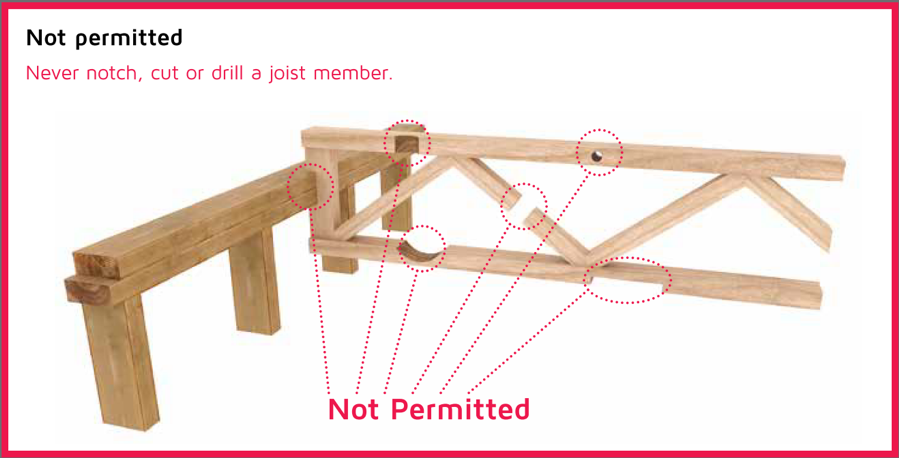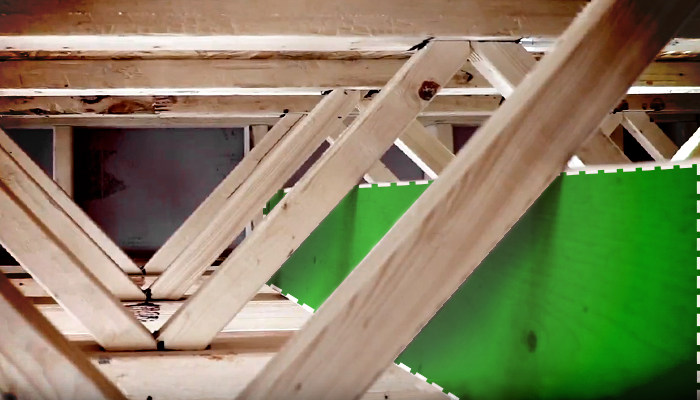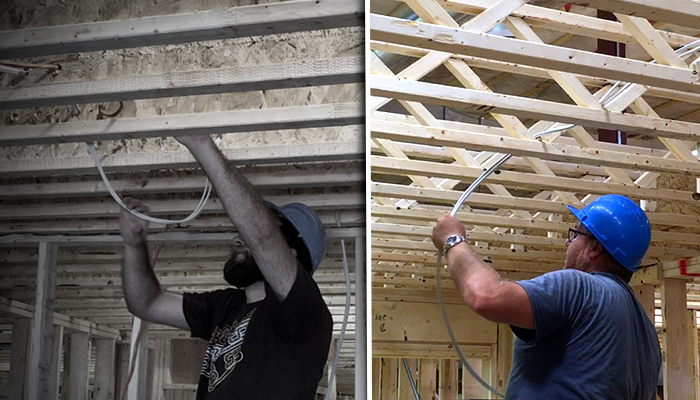
You’re a builder visiting your jobsite the day after the trades have finished their installations, and you immediately realize something is wrong. The brand new joists you carefully installed have been cut, drilled or otherwise mangled! Welcome To Your Worst Nightmare! Plumbers, electricians and HVAC contractors have left their marks, altering your floor system so … Continued

Today’s housing market offers an ever-increasing variety of construction materials. From the more traditional lumber that we’ve been using for centuries, the industry moved to more efficient solutions. The I-joists and plated trusses appeared in the late 60’s and early 70’s to challenge widespread methods and standards. But it wouldn’t be until 1990 that a … Continued

We live in a world dominated by the need for “open” living spaces. New homes are designed for such and old homes are remodeled to remove walls. When we gather as family and friends, open concept design allows us to remain engaged at all times. Obviously, it’s the structure of a building that makes it … Continued

A 1979 Oscar-nominated movie with the title “China Syndrome” starred Michael Douglas and Jane Fonda. The pair, acting as broadcast reporters, were filming a news story in a nuclear energy facility when they felt an unusual alarming vibration. Something was wrong. Real life builders and developers too often hear the phrases “Something is wrong with … Continued

Two years ago, a builder in Maine faced a daunting challenge. He had to build a large multi-use structure in a typically tight New England location and meet a very specific completion deadline. A developer in York Beach, Maine had engaged him to complete a project called York Beach Residence Club. It was designed to … Continued

The fact that TRIFORCE® joists are assembled with “finger joints” was certainly breakthrough news in the world of engineered building components. But the breakthrough was about the application for joist manufacturing rather than the actual joinery process itself. Versions of finger-like joinery have been responsible for strong things for thousands of years. The Egyptians and … Continued

Times change, and so does our industry. We must adapt to new requirements, stricter legislation, and evolving trends. The new house market illustrates this eloquently. Buyers have specific criteria in mind when making their choice. Consequently, new building methods and materials are essential to address this new reality. Now, other than the neighborhood and the … Continued

“Why should I use a floor joist that is trimmable when I can install a made-to-length truss immediately?” Because it’s not a perfect world! Just ask the framer who, after finishing his morning coffee, opens the bundle of trusses, hoists the first one onto the foundation and discovers it’s too short by 6 inches. Ask … Continued

Science fiction title? How about the technical description of how strongback bridging works. Transient oscillations don’t represent the serious danger that hostile extraterrestrials might pose, but they do result in discomfort and uneasy feelings in humans. Transient oscillations are vibrations in a floor system, caused by footfalls or rhythmic motions (such as a washing machine … Continued

A hallmark of engineered joists is their use of geometry to maximize structural capacity. The two most common geometric shapes configuring successful engineered floor framing components are the triangle and the “I”. History sings praises of the “I” shape. It recognizes the strength it gave to rails carrying transcontinental trains that unified young nations and … Continued